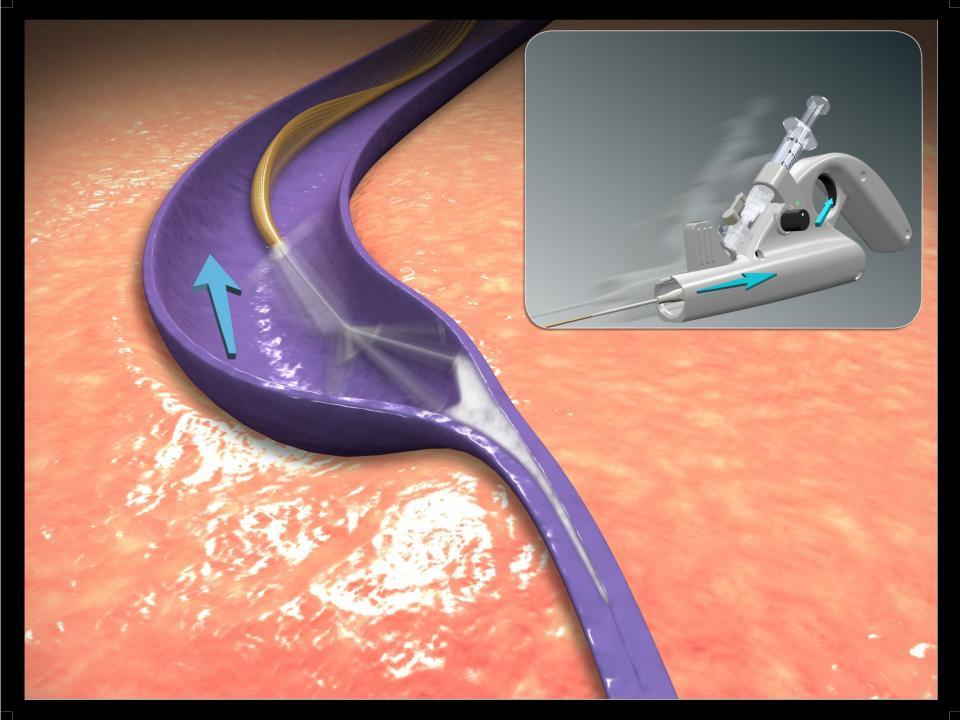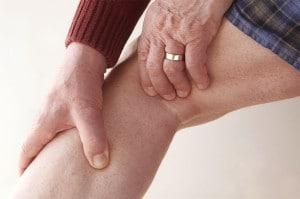Venous Stasis Dermatitis is a Result of Venous Hypertension in the Legs Venous stasis dermatitis is a manifestation of advanced vein disease that affects the skin in the lower leg. It is commonly misdiagnosed with patients potentially going years without identification of the true cause; underlying vein disease. Venous stasis dermatitis is a result of venous hypertension in the legs. … Continue reading Venous Stasis Dermatitis
Superficial Phlebitis and Acute Thrombophlebitis
What Is Phlebitis? Up to a fourth of all patients with varicose veins and lower extremity venous insufficiency will have an episode of clotting of a varicosity. This can be nearly invisible or can be located just underneath the skin. This condition is called acute superficial thrombophlebitis. The condition causes pain and discomfort but is usually self-limiting. It should, however, be … Continue reading Superficial Phlebitis and Acute Thrombophlebitis
ClariVein Treatment (Mechanochemical)
Introduction Treatment of Venous Incompetence Precision is proud to be one of the few centers in DFW to have been able to use this state-of-the-art technology. This new device is a treatment utilizing endovenous treatment (treatment inside the vein), in conjunction with chemical ablation. It also employs a new approach, that of mechanical ablation, hence the term … Continue reading ClariVein Treatment (Mechanochemical)
Aching Leg Pain | Pain in Legs
Aching Leg Pain Can Be a Symptom of Lower Extremity Venous Disease A common symptom of lower extremity venous disease is a dull, heavy ache in the legs. Frequently, the pain is worse in the evenings particularly after a day of sitting or standing.If you feel you may be struggling with venous disease of the legs, … Continue reading Aching Leg Pain | Pain in Legs
Common Symptoms
Symptoms of Lower Extremity Venous Insufficiency Symptoms of lower extremity venous insufficiency can range from minor cosmetic issues to a serious medically disabling condition. Not all symptoms match the outward appearance and vice versa. It is possible to have significant vein disease without symptoms, or to have symptoms but no outward manifestations such as spider … Continue reading Common Symptoms
Tunneled Central Venous Catheter Placement
Overview Long-term venous access is of critical importance to a wide group of patients. This is achieved by inserting tunneled lines via the internal jugular vein or the subclavian vein. This can be done either surgically or percutaneously. Combined use of ultrasonographically guided vein puncture and fluoroscopy has significantly reduced the complications related to insertion. … Continue reading Tunneled Central Venous Catheter Placement
Postural Orthostatic Tachycardia Syndrome – POTS
Postural Orthostatic Tachycardia Syndrome (POTS) is a form of dysautonomia that is estimated to impact between 1,000,000 and 3,000,000 Americans, and millions more around the world. POTS is a form of orthostatic intolerance that is associated with the presence of excessive tachycardia and many other symptoms upon standing. Signs and Symptoms While the diagnostic criteria … Continue reading Postural Orthostatic Tachycardia Syndrome – POTS
Peripheral Arterial Disease
Peripheral Arterial Disease (PAD) – Definition Peripheral Arterial Disease or Peripheral Artery Disease (PAD), also referred to as arteriosclerosis of the extremities and peripheral vascular disease, is a condition that causes poor blood circulation to the kidneys, intestines, arms, legs, and feet. Blood flow may be reduced or blocked by narrowed or hardened blood vessels. … Continue reading Peripheral Arterial Disease








